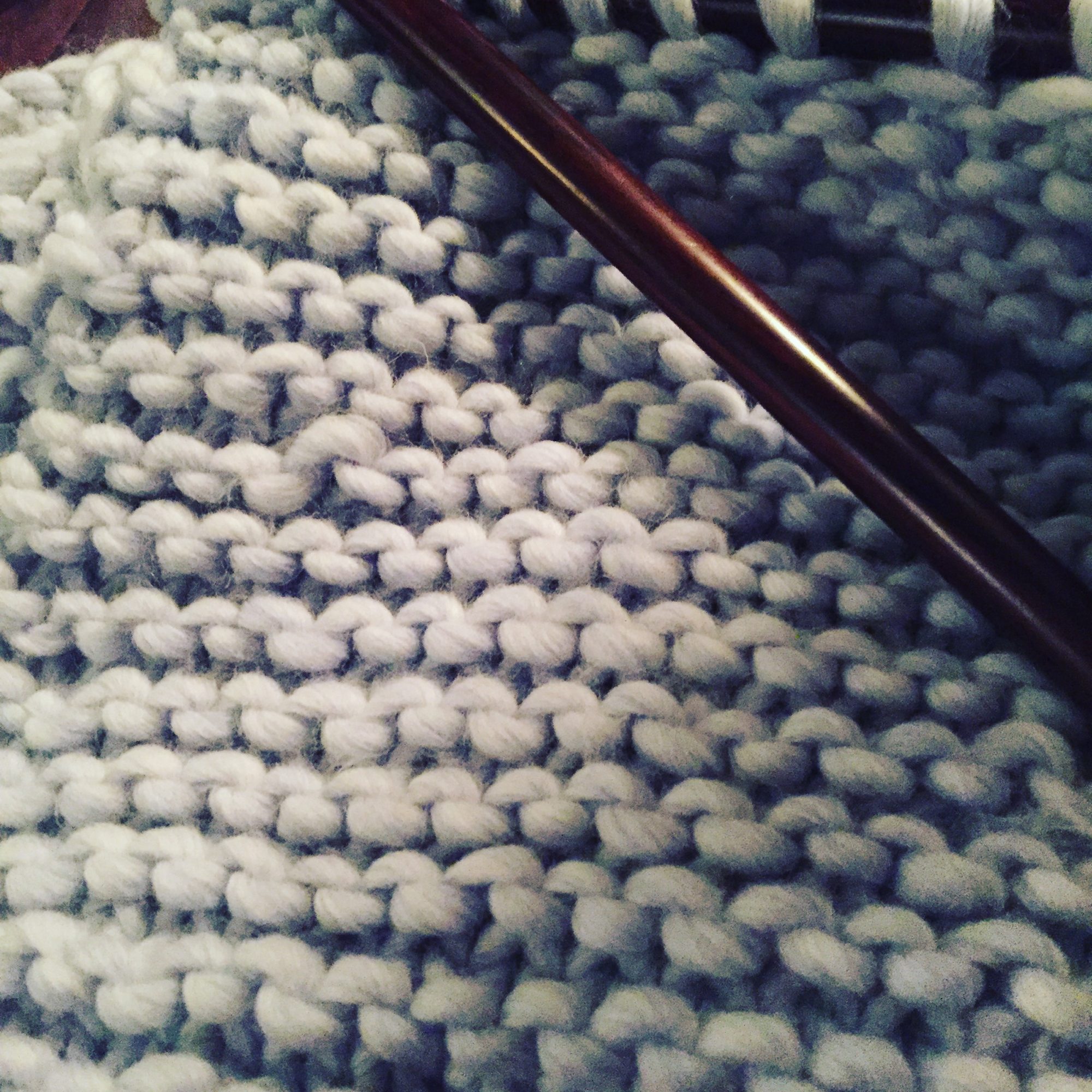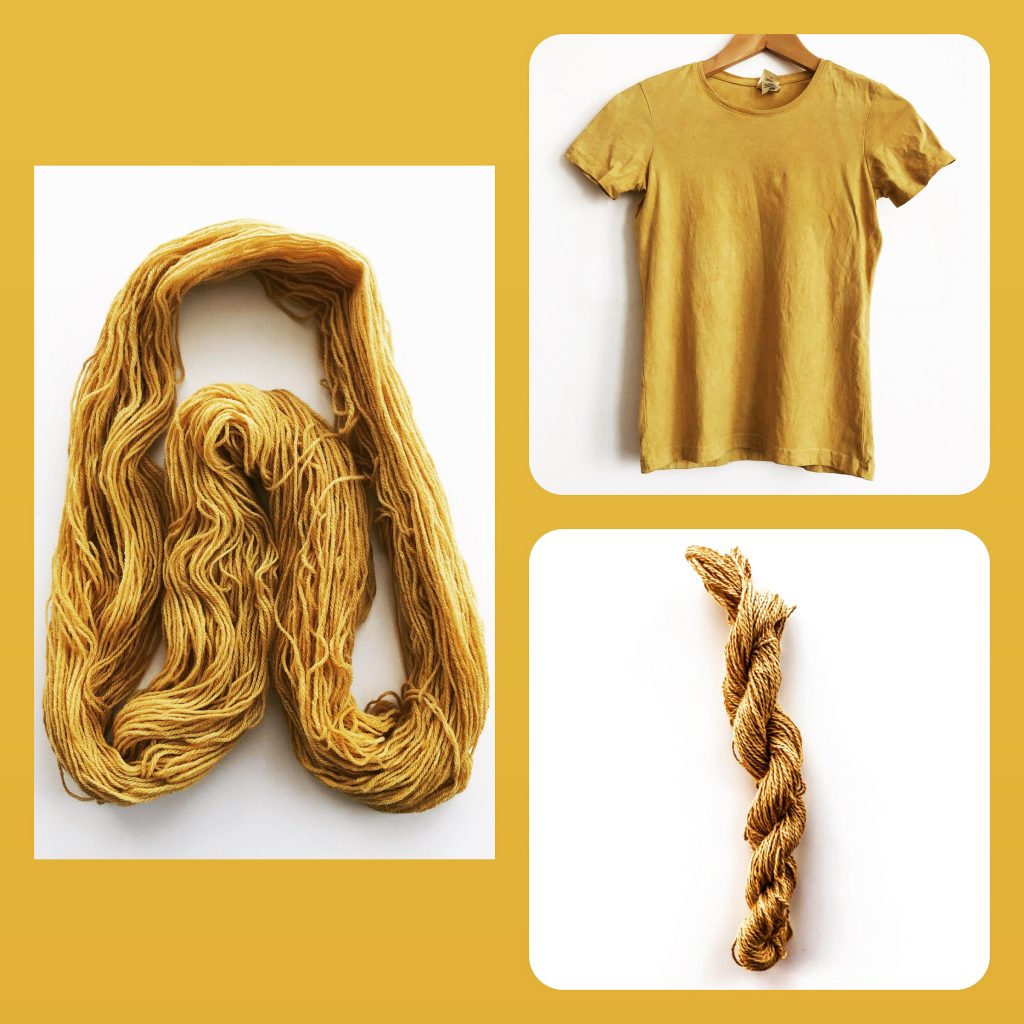
From my natural dyeing research, I had learnt that pomegranate skins make a great, long lasting dye because they are rich in tannins.
Thankfully, I love eating pomegranate so I was really pleased that I could find a resourceful way to use the left over skins instead of just discarding them.
I decided the best thing to do would be to dry out the skins first before using them for a dye bath so I got as much of the left over pith off as best I could and left them near a window in the sunshine to dry out.
My first mistake was that I didn’t use them immediately after drying them and stored them in a plastic bag in the cupboard. A couple of weeks later when I went to use them for dyeing, I found them all soggy and covered in mould which I think resulted from not cleaning the skins properly and also storing them in a plastic bag rather than a paper one.
I now store all my natural dye materials such as onion skins, in paper bags since they take a while to collect. However, with the pomegranate skins, I’ve now decided that I will only use the skins when I know I’m going to dye with them straight away after drying them.
On my second attempt, I used them straight away (after drying them near a window in the sunshine). I used left over skins of 2 x pomegranates which equated to approximately 100g. I highly recommend a set of electronic scales for weighing your dye ingredients.
I covered the skins in an aluminium dye pot with enough water to float about and heated up the skins to a simmer for approximately an hour and a half. You’ll see from the photo below that a nice golden colour was being extracted from the skins:
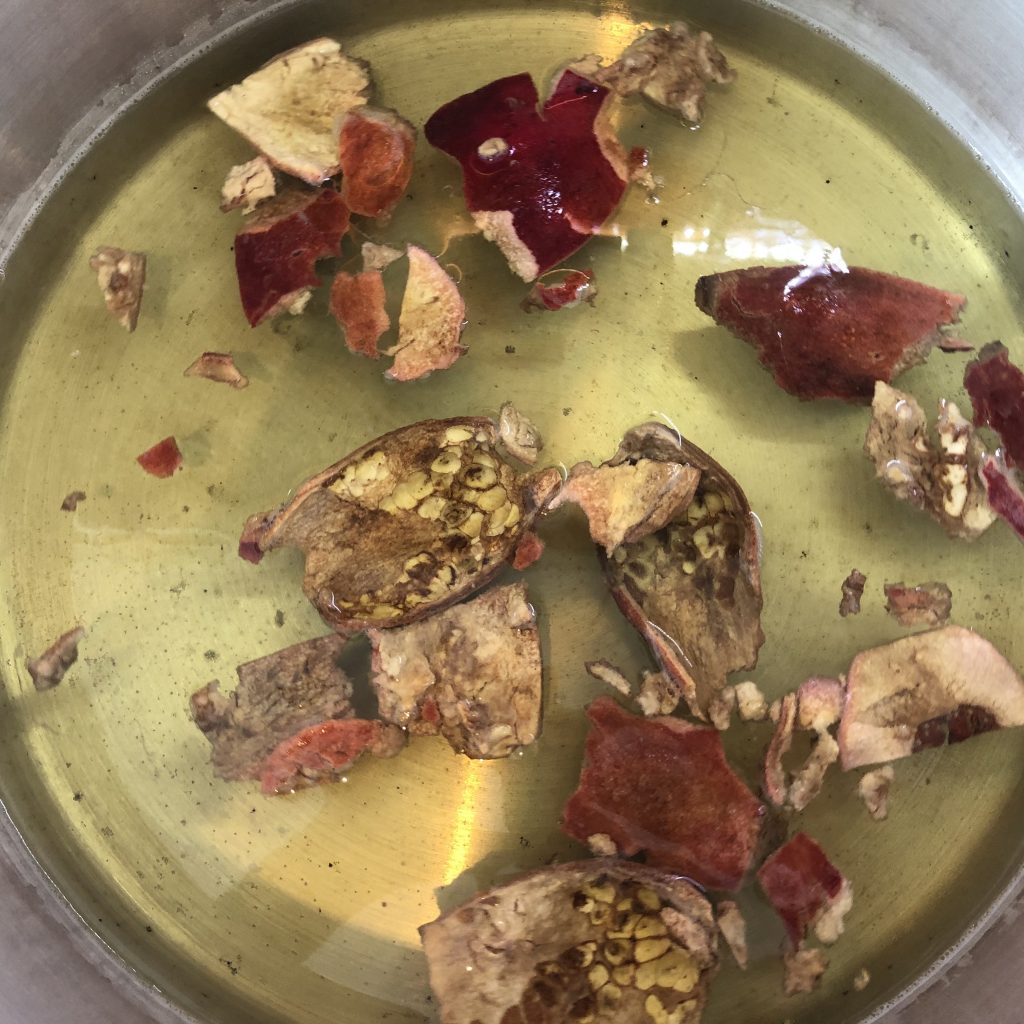
Once the pot had cooled, I mashed up the skins with my hands (in rubber gloves, to prevent getting the dye all over me) and heated the pot again to try and extract some further dye. I then sieved the dye through some cheesecloth into a bowl so the skins could be discarded and heated the concentrated dye again in the pot.
I decided the first thing I wanted to dye in the pot was a 100g skein of Dorset Horn British Wool which had been pre-treated with Soya Milk rather than a traditional mordant:
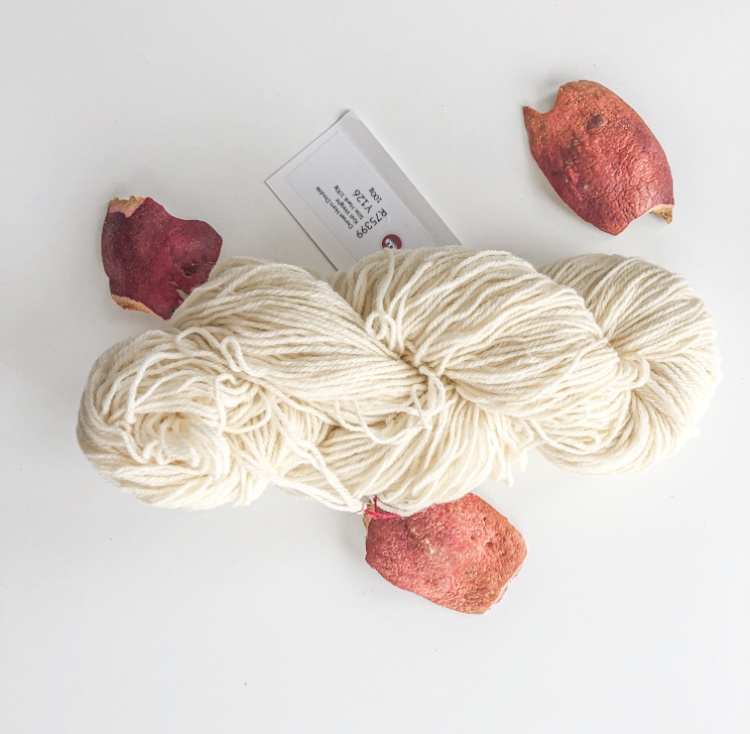
I heated the wool to a simmer in the dye pot then left it to rest once the pot had cooled:
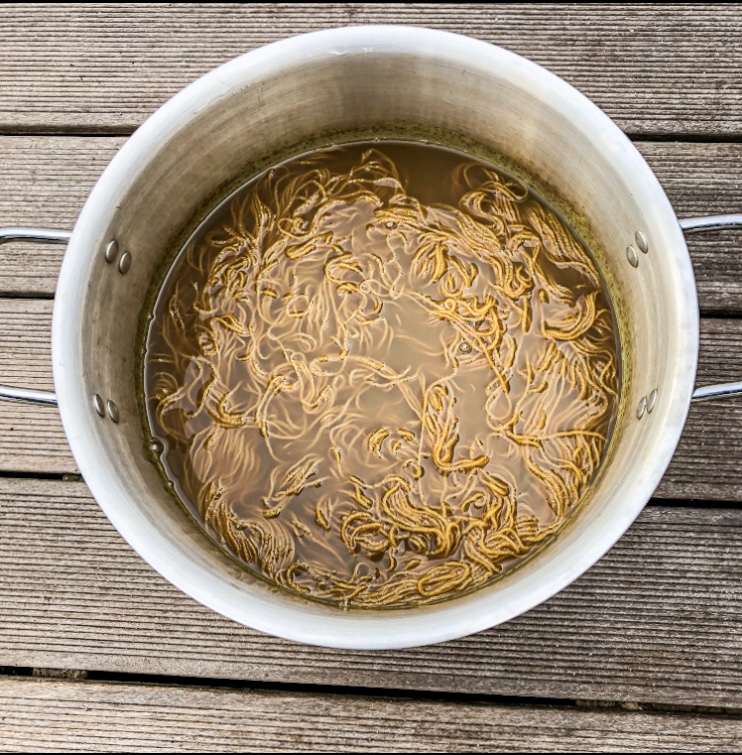
I then hung the yarn out to dry in the shade and here is the end result:
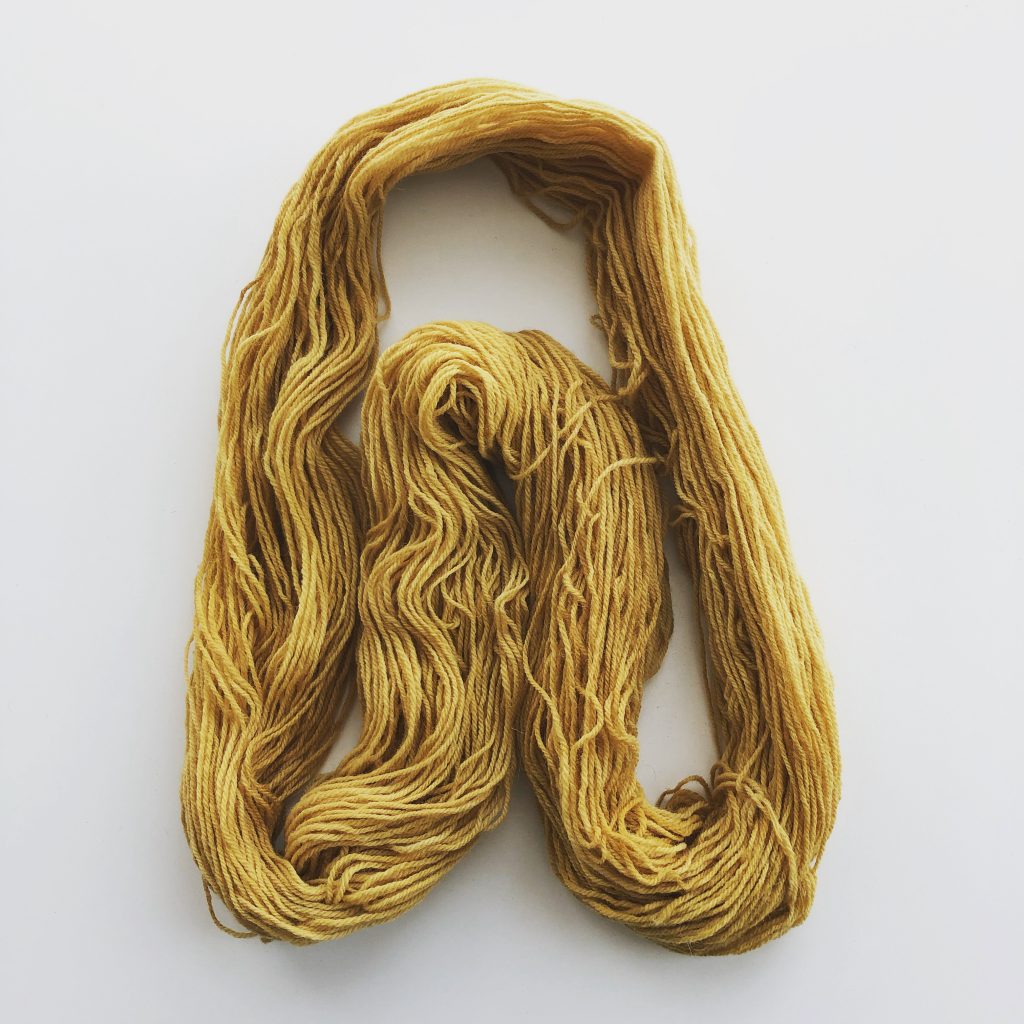
I was really happy with the golden colour the pomegranate had produced and I really look forward to knitting something with this wool once I let it rest to let the dye bond further before rinsing.
I decided that there was potentially enough dye left in my pot to enable me to dye something further.
I had never tried dyeing something further after using the dye pot for the first time in previous dyeing experiments so thought it would be great to see the results.
I decided to dye a white organic cotton t-shirt and also some mulberry silk embroidery thread which had both been pre-treated with soya milk rather than a traditional mordant.
I again heated the dye pot to a simmer and left them to rest in the pot once cooled to give further opportunity for the dye to bond with the t-shirt and thread:
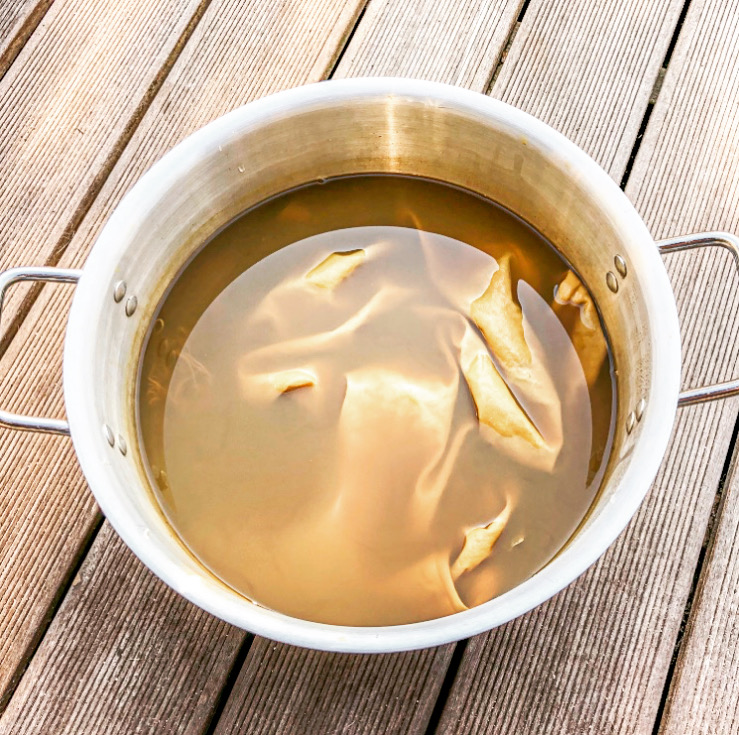
The colour of the dye pot didn’t seem much different to when I had the wool in there and I was surprised as I thought it would be lighter after using for the second time. Here are the results of the t-shirt and thread after I dried them:
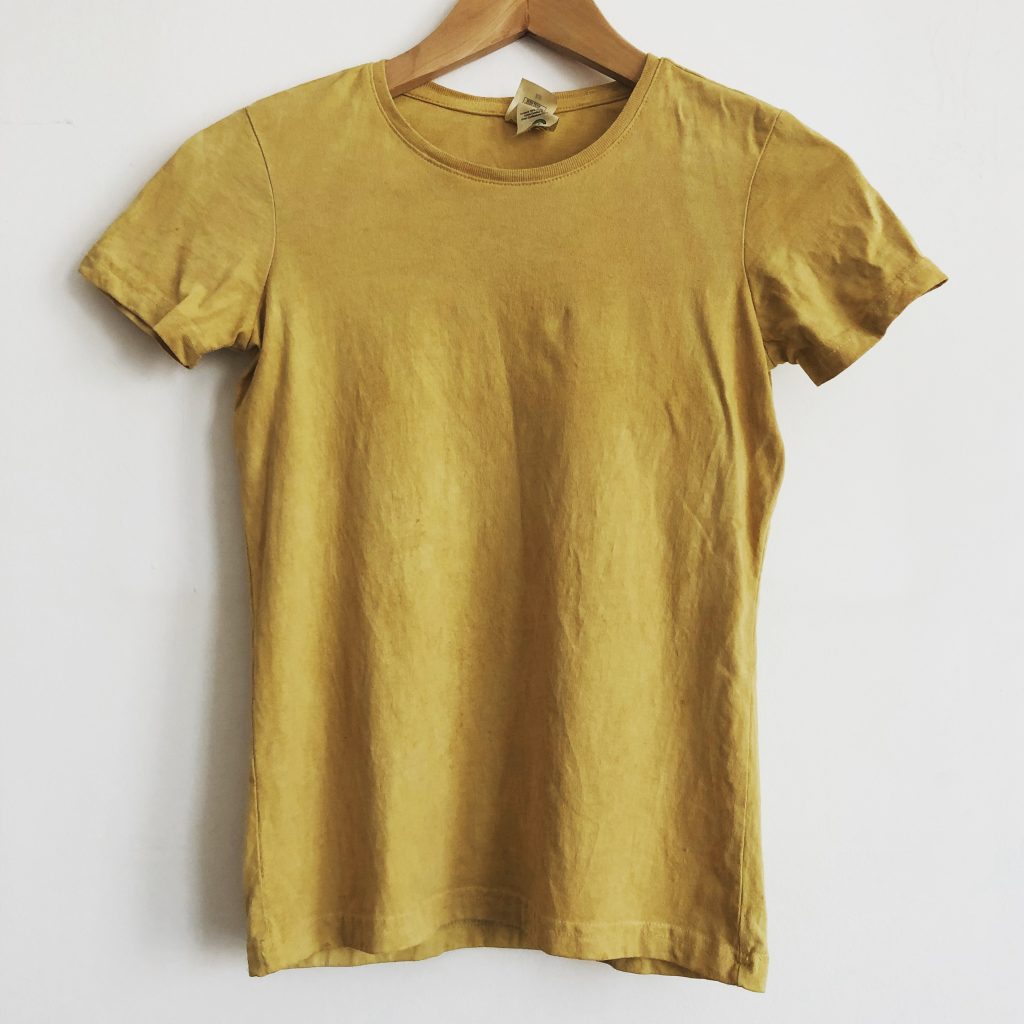
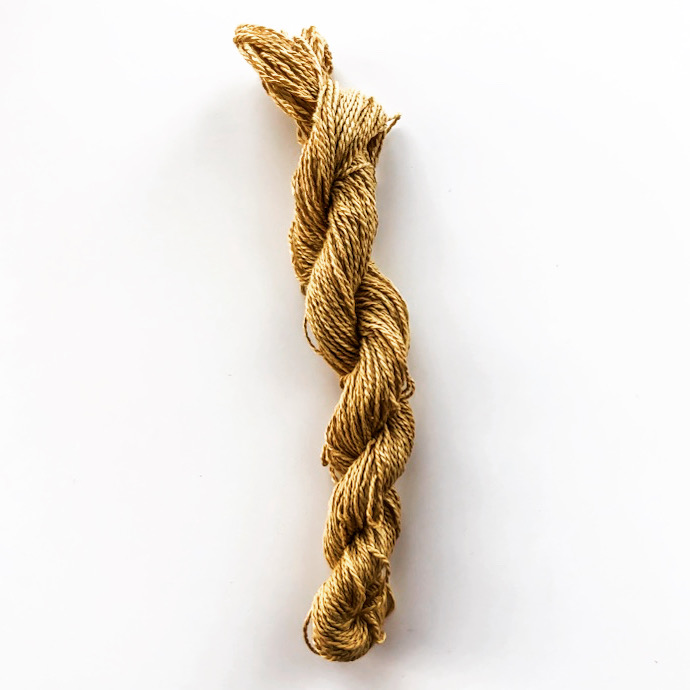
The colours were very similar to the wool I had dyed so I was really happy with the results!
I will definitely be using pomegranate skins again in my future dyes since I think it makes a great golden colour.
My only slight disappointment was with the mulberry silk embroidery thread which had lost it’s sheen when I had pre-treated it with soya milk. The initial sheen to the thread pre-treating unfortunately hasn’t come back after the dye process so I think I will try dyeing a further thread at some point with a tannin rich dye without the soya milk treatment first. I will report the results of this method in a future blog.
